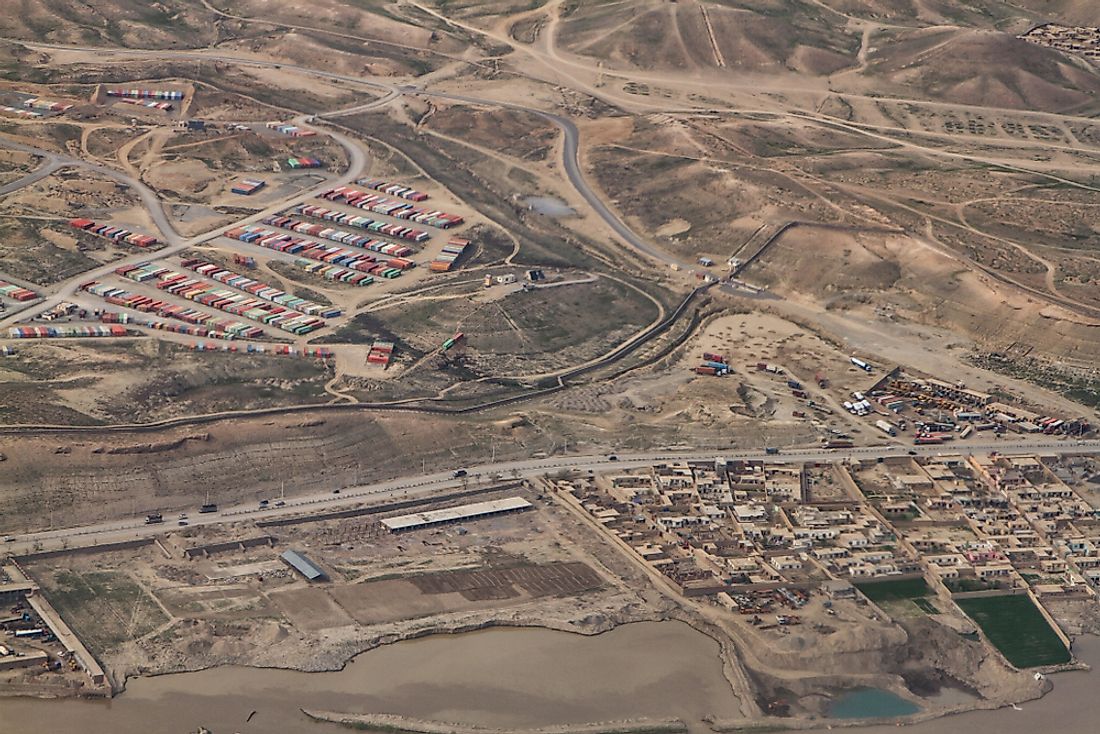What Are The Biggest Industries In Afghanistan?

Afghanistan is a landlocked nation found in central and south Asia and spans an area of 252,000 square miles. The country imports goods worth more than $6 billion and exports goods valued around $1 billion which include nuts, fruits, gold, and opium. The country has huge mineral deposits valued at over $41 trillion of proven reserves. Here are the largest industries in Afghanistan:
Mining industry
Afghanistan has huge deposits of nonfuel mineral reserves which include both known and potential deposits of different types of minerals such as iron, copper, lithium, bauxite, silver, and rare earth metals among others. In 2010, the country was reported to have approximately $1 trillion of untapped mineral deposits, which are enough to fundamentally change the economy of Afghanistan. According to other sources, the total value of minerals in Afghanistan could be worth more than $3 trillion. Some of the previously unknown deposits include huge veins of gold, cobalt, copper, iron, and lithium. The deposits are so huge, and it is believed that if they are fully exploited, it could transform Afghanistan into one of the most critical mining centers in the world. It is also believed that Ghazni province could be holding the largest lithium reserves in the world. The government of Afghanistan has invited more than 200 global companies to explore the minerals in the country. Ministry of mines and petroleum controls all the mining in the country and has its headquarters in Kabul with several regional branches spread across the country.
Agriculture
In Afghanistan, about 12% of the total land area is arable, and out of this only 6% is presently utilized for cultivation. Agricultural production in the country is only a fraction of its potential, and it is constrained by over-reliance on erratic winter snow and rainwater in spring. Irrigation in the country is still underdeveloped, and there is minimal mechanization, use of fertilizers, and pesticides. Different types of crops cultivated in different parts of the country, for instance, the region near Herat, Kandahar, and the larger part of Kabul plains produce different types of fruits, while the Northern part of the country such as Takhar and Helmand provinces produce mainly cotton. Corn is widely cultivated in Nangarhar and Paktia provinces, while rice is cultivated in Laghman, Baghlan, and Kunduz provinces. Wheat is an important crop in Afghanistan, and it is common in different regions and the counts for 80% of cereal production in the country. Total wheat production in 2002 was about 2.69 million tonnes, which was about 67% more than the 2001 production. Other important crops in the country include barley, corn, rice potatoes, and cotton. In 2001, agricultural commodities accounted for almost 53% of the country’s total exports.
Manufacturing
Manufacturing in Afghanistan is still underdeveloped, and its contribution to the country's output on domestic employment is minimal in comparison with the size and the resource endowment in the country. Most of the industrial employment is confined to small-scale and manufacturing operations of handicrafts, which contribute more on export and domestic value output compared to the large scale organized industries. Employment in the manufacturing industry depends mainly on domestic raw materials such as cotton, wool, skins and hides, and fruits. The constraints against rapid development of manufacturing sector include income levels in the country, the location of the country which is mainly landlocked, and mountainous terrain. The government of Afghanistan has a 7-year plan which is a public investment program which emphasizes industrial expansion.











